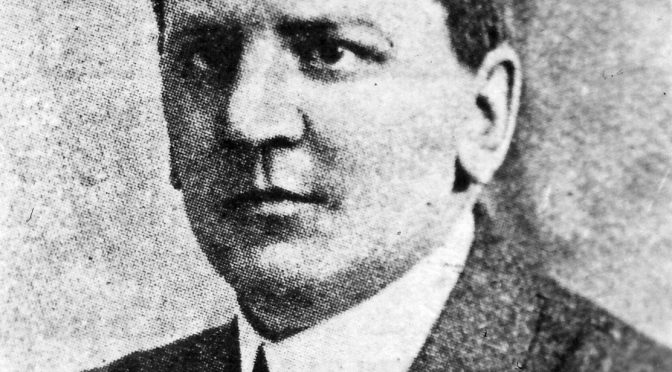We remember Thomas Dawson who passed away seventy years ago on Sunday, December 16th, 1951.
He was also known by the pseudonym T. Dyke Robinson (we are looking for a primary source for this)
Thomas Rayner Dawson was born on Thursday, November 28th 1889 in Leeds, Yorkshire to Henry and Jane Dawson (née Rayner).
The early history of TRD and his family has been meticulously researched by Yorkshire chess historian, Steve Mann. We recommend you visit this page to discover the detail.
According to Edward Winter in Chess Notes TRD lived at the following addresses :
- 5 Clyde Road, Wallington, Surrey, England (Ranneforths Schachkalender, 1925, page 139)
- 2 Lyndhurst Road, Thornton Heath, Surrey, England (Ranneforths Schach-Kalender, 1930, page 65).
- 31 Clyde Road, Croydon, England (Fairy Chess Review, issues from 1946 to 1949*).
From The Oxford Companion to Chess (OUP, 1984 & 1996)by Hooper & Ken Whyld:
“English composer, pioneer of both fairy problems and retrograde analysis. His problems in these fields form the greater part of his output (about 6,500 compositions) and are better remembered than his studies and orthodox problems. For fairy problems he invented new pieces: grasshopper (1912) LEO (1912), NEUTRAL MAN (1912) NIGHT RIDER (1925), and VAO (1912); he codified new rules such as the maximummer (1913) and various kinds of series-mover; and he used unorthodox boards.

In 1915 he wrote Retrograde Analysis, the first book on the subject, completing the project begun several years earlier by the German composer Wolfgang Hundsdorfer (1879-1951).
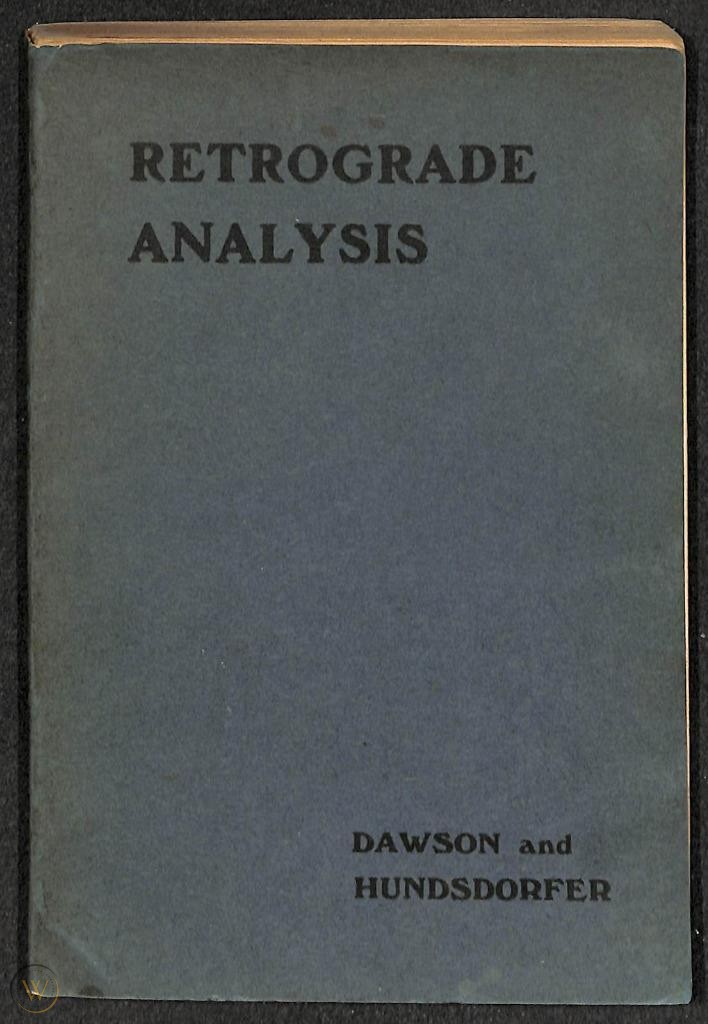
From 1919 to 1930 Dawson conducted a column devoted to fairy problems in the Chess Amateur, In 1926 he was a co-founder of The Problemist , which he edited for its first six years and he founded and edited The Problemist Fairy Supplement (1931-6) continued as The Fairy Chess Review (1936-51).
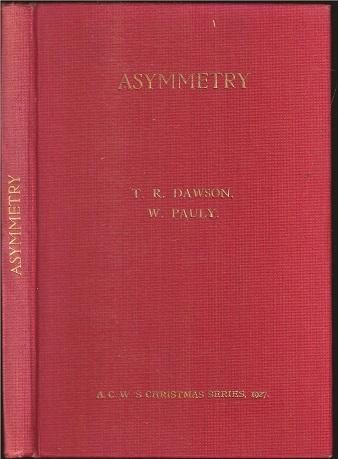
Besides conducting columns in several newspapers and periodicals, one of them daily and one in the Braille Chess Magazine, Dawson edited the problem section of the British Chess Magazine from 1931 to 1951; he devised and published in its pages (1947-50) a systematic terminology for problem themes in the hope that it would supplant the extensive jargon then and now in use, Dawson wrote five hooks on fairy problems: Caissa’s Wild Roses (1935); C. M. Fox, His Problems (1936); Caissa’s Wild Roses in Clusters (1937); Ultimate Themes (1938); and Caissa’s Fairy Tales (1947).
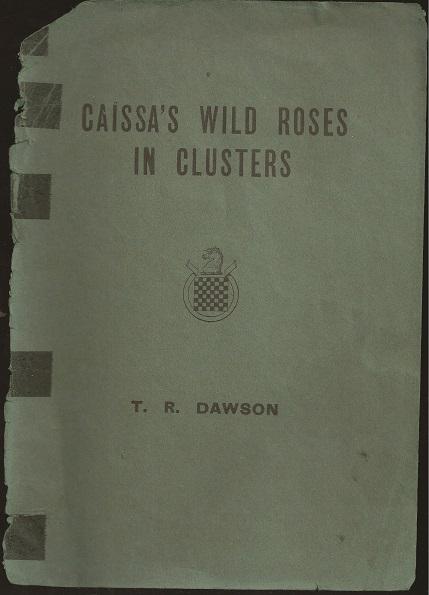
Charles Masson Fox (1866-1935) was a patron whose generosity made possible the publication of four of these books and the two fairy problem magazines founded by Dawson. Ultimate Themes deals with tasks, another of Dawson’s favourite subjects. In 1973 all five books were republished in one volume. Five Classics of Fairy Chess.
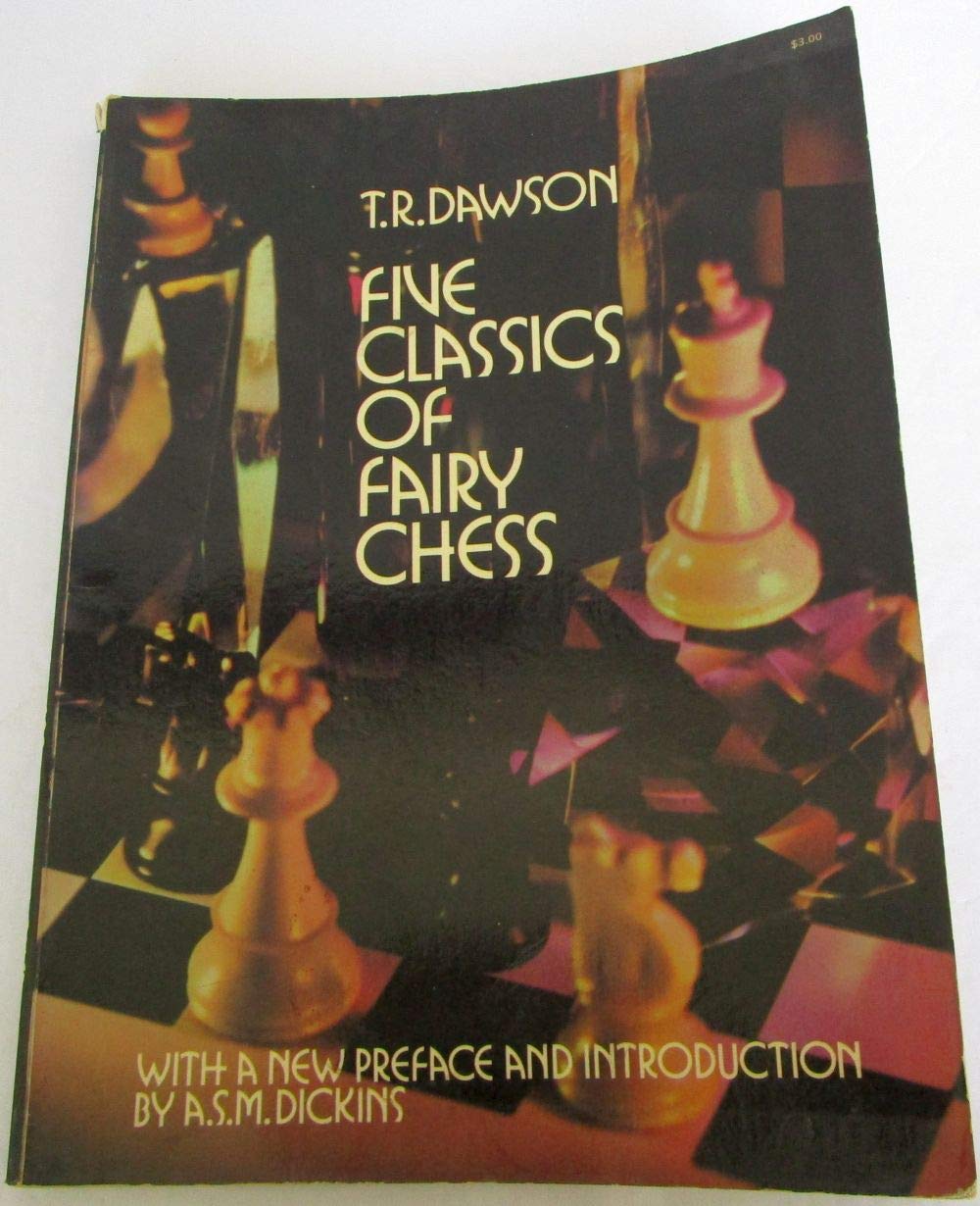
Dawson found it difficult to understand the problemist’s idea of beauty because it is not susceptible to precise definition. The artist talks of “quiet” moves, oblivious that they are White’s most pulverizing attacks! This aesthetic folly, reverence, response thrill to vain-glorious bombast runs throughout chess.(See Bohemian for a problem showing 16 model mates, a task Dawson claimed as a record but a setting Bohemian composers would reject.) His genius did not set him apart from his fellows; he could find time for casual visitors and would explain his ideas to a tyro with patience, modesty, and kindness. Although he won many tourney prizes much of his work was designed to encourage others, to enlarge the small band of fairy problem devotees, He composed less for fame than to amuse himself, confessing to another composer ‘We do these things for ourselves alone.’
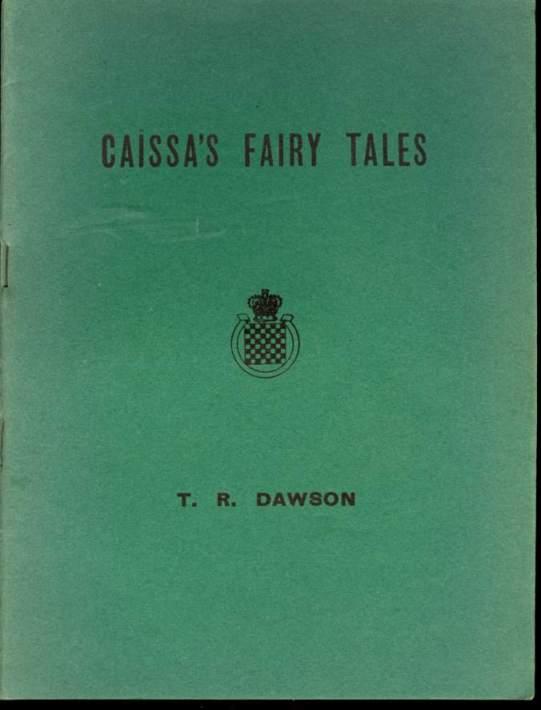
A chemistry graduate, Dawson took a post in the rubber industry in 1922 and rose to be head of the Intelligence Division of the British Rubber Manufacturer for which he founded, catalogued, and maintained a technical library. Unwell for the last year of his life, he died from a stroke. K. Fabel and C. E. Kemp, Schach ohne Grenzen or Chess unlimited (1969) is a survey, written in German and English, of Dawson’s contribution to the art of fairy problems.”
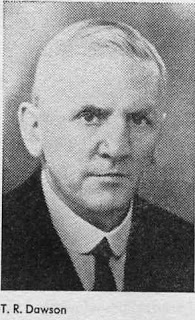
From The Encyclopedia of Chess (Robert Hale 1970 & 1976), Anne Sunnucks :
“British problemist. Born on 28th November 1889. Died on 16th December 1951. Universally known as TRD., the great master of Fairy problems. His wealth of invention held the chess world enthralled. His output comprised about 6,400 problems and 150 studies.
Dawson was a nephew of the late James Rayner, himself a noted chess problemist . From as early as about 1910, TRD had conducted the ‘Chess Endings‘ section in the Chess Amateur, and its Fairy section from 1919. He worked with BG Laws from Mark 1930 conducting the problem pages of the British Chess Magazine, and following Laws’ death he assumed complete charge of the section from October 1931 to February 1951 when ill health forced him to relinquish the work.
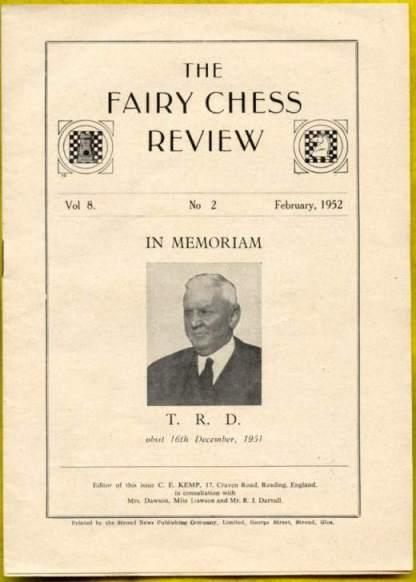
The Problemist Fairy Chess Supplement subsequently renamed The Fairy Chess Review was started by TRD in August 1930. TRD was concerned in a number of other chess publications ; chess for the Blind, several books of the AC White Christmas series, BCPS Honours 1926-29, and the CM Fox series.
He was largely instrumental in the publication of the first issue of The Problemist on 1st January 1926, and was editor until May 1931. He was President of The British Chess Problem Society from September 1931 to 1943.
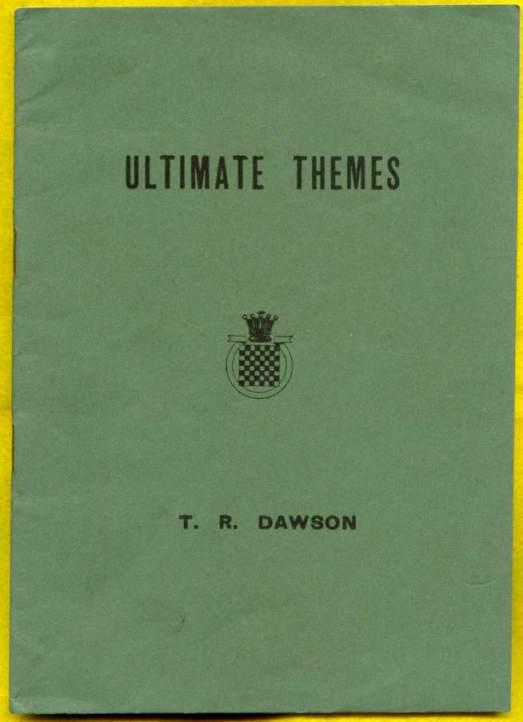
Apart from chess, Thomas Dawson, MSc, FRIC, FIRI was an international authority on rubber, and was responsible for the creation of the world-famous rubber library at Croydon, as well as its ‘Dawson’ system of rubber literature documentation. A Guide to Fairy Chess and The Problemist March 1952 detail the remarkable life-time accomplishments of TRD.”
From The Encyclopaedia of Chess (Batsford, 1977), Harry Golombek OBE, John Rice writes:
“British problemist, output over 6,000, 5,000+ being fairies . Dawson is remembered especially for his enormous contribution to fairy chess, of which he was the world’s leading exponent. Not only did he invent new pieces (e.g. Grasshopper, Nightrider) and new forms (e.g. Serieshelpmate), he also popularised fairy ideas with unparalleled enthusiasm through his writing and editing.
Books include Caissa’s Wild Roses (1935), Caissa’s Wild Roses in Clusters (1937), Ultimate Themes (1938), and Caissa’s Fairy Tales (1947); and in collaboration Retrograde Analysis (1915) and Asymmetry (1928).
Editor of The Problemist (1922-31), fairy secretary of Chess Amateur (1919-30, Fairy Chess Review (previously Problemist Fairy Supplement) (1930-51) and problem pages of the British Chess Magazine (1931-51). Of these, the Fairy Chess Review was probably his greatest achievement.
President of British Chess Problem Society 1931-43.”
When TRD stepped down as Endings editor of British Chess Magazine in December 1947 he wrote this:
“With this page I reluctantly terminate on health grounds some forty years of work in the Endings field, and my contributions to this corner of the “British Chess Magazine”. To the many readers of these pages, a Merry Christmas and steadily improving years.”
He handed over his column to Richard Guy.
From British Chess Magazine, Volume LXXI (71, 1951), Number 3 (March) pp. 78-80 we have notice of the retirement of TRD written by Brian Reilly:
WITH the retirement of Mr. T. R. Dawson a wonderful chapter in the history of the “B.C.M.” is brought to a close. It is a profound truism that in England the Chess Problem has never possessed such an assiduous and devoted servant and although Mr. Dawson had already attained greatness when he joined us, the story of the Past twenty years is one of unparalleled intensive activity in which the ontological essays on “Systematic Terminology” may be considered the crowning
achievement of a unique career.
His immense influence in the realm of Fairy Chess is well known; indeed, when the next instalment in the history
of the subject comes to be written it will be mainly that of our own Colossus with his countless converts finding, not dishonourable graves, but new and entrancing visions of beautiful things made possible through him. The onus probandi of his contribution to the orthodox problem, as treated in the “‘B.C.M.,” lies with posterity and in the minds of men unencumbered by prejudice and receptive to new and startling ideas.
In this Editorial we can only say, on behalf of our many readers,
“Thank you, T. R. D., for everything that you have done: for your devotion to your cause and your inspiration to your fellows. It has been a privilege to be associated with you and in the well-deserved years of retirement may your days and those of your loved ones, be long, fruitful, and full of the greatest happiness.”
In the nature of things we must go on and in bidding. a reluctant farewell to the magic name of T. R. D. we welcome to Problem World the young and and enthusiastic Mr. S. Sedgwick. His first article, dealing with the work of T. R. D., appears overleaf, and we commend it to all our readers.
Here is that editorial as it originally appeared:
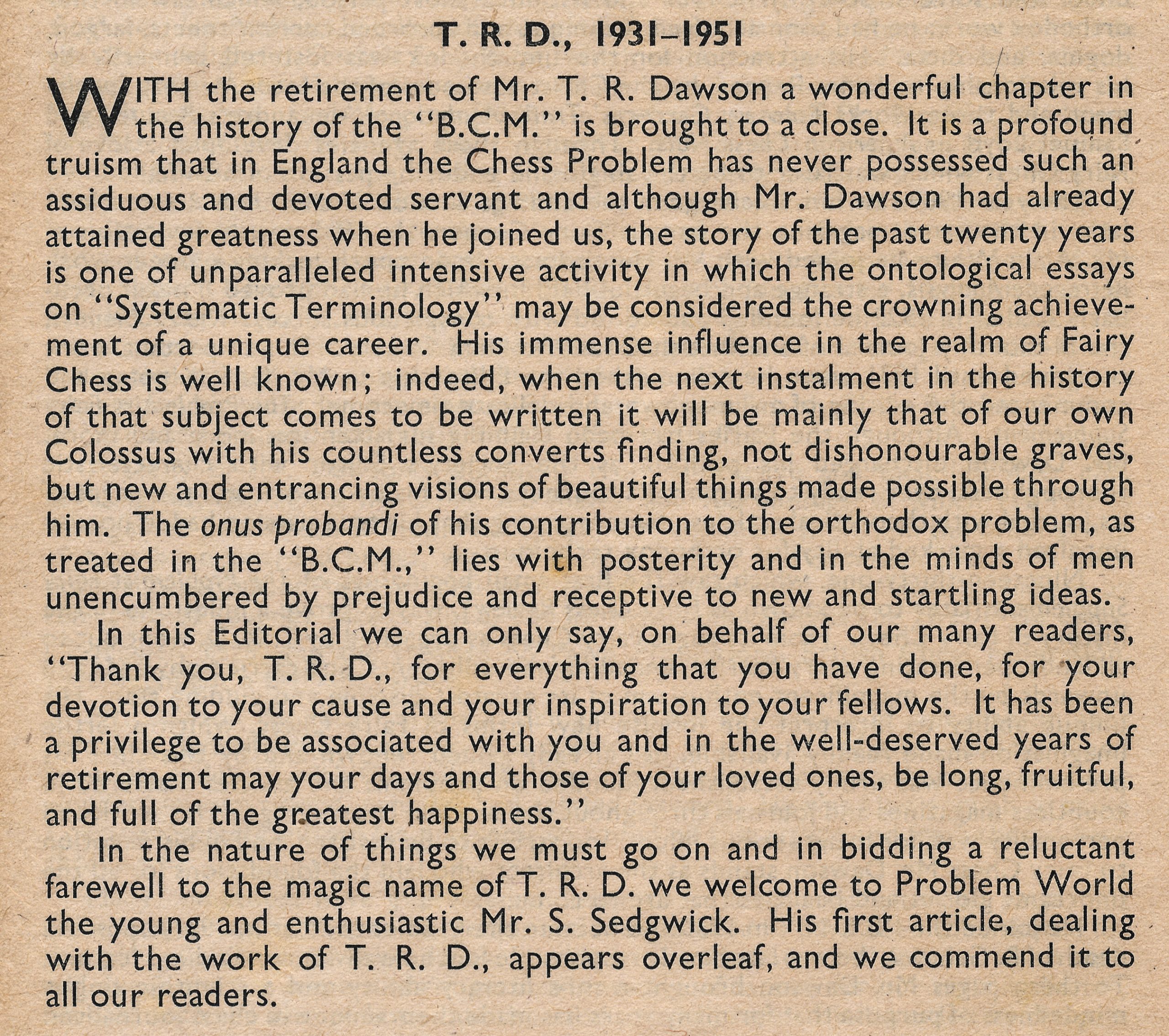
Following that we have this appreciation from the incoming Problem Editor, Stanley Sedgwick of 337 Strone Road, Manor Park, London E12:
RETIREMENT OF MR. T. R. DAWSON
The news that Mr. Dawson, through reasons of health, has to relinquish these pages will be received with a deep and universal regret.
In the T. R. D. Diamond Jubilee booklet, 1949, the Editor was constrained to remark that so far as Fairy Chess Review was concerned there were no signs of Mr. Dawson retiring to that otium cum dignitate which was unquestionably his due; for the “B.C.M.” that prophecy is now unfortunately fulfilled. I might well have called this article “Twenty Glorious Years,” for in that time he has poured forth from these pages, in a never ending stream, the
treasures of a unique creative mind that makes the lot of any successor in unenviable one. As befits the occasion this issue is devoted to T. R. D. and I have to thank the many kind friends who at short notice have joined me in this tribute.
Thomas Rayner Dawson, M.Sc., F.I.C., F.I.R.I.. was born on November 29th, 1889, in Leeds, Yorkshire. He was a nephew of the late James Rayner, who edited these pages from 1889 until his death in 1898. A study of the “B.C.M.” for those years reveals a man whose love for the bizarre and unorthodox far outstrips any regard for the conventional. Bearing in mind Mr. Dawson’s subsequent pre-eminence in Fairy Chess it can be truly said that he was nurtured in the correct Puck-like atmosphere and to use his own words: “l cut my teeth on some of his old round-headed pawns!”
By the year 1900 he had already assimilated the rules of the game from a book of boy’s pastimes and evidenced an interest, in local newspaper columns, The Leeds Mercury Supplement and Yorkshire Weekly Post. His first problem – a direct mate in two – fell under the solvers’ scrutiny in 1907 and within a short period, which saw further orthodox work, he had soon acquired technique and absorbed current tenets, jargon, dogma, and dicta. – His attraction for the unorthodox was fostered primarily by his relationship to James Rayner, by the Christmas issues of the Leeds Mercury Supplement, and three works Tolosa y Carreras’ Traite Analytique, Alexandre’s Beautes, and Samuel Loyd in American Chess Nuts.
Through these agencies developed a love of Fairy Chess which was later to be the single and enduring passion of his life.
The year 1909 saw him in charge of the Endings Section of the Chess Amateur and later in the same magazine the famous Fairy Corner. In l915 at the invitation of Mr. Alain White he joined with W. Hundsdorfer in an epoch making pioneer work Retrograde Analysis, a strange and beautiful field in which he had proved himself peculiarly facile. In 1922 he founded and edited with conspicuous success The Problemist, the bi-monthly journal of the British Chess Problem Society.
This important work continued until 1931 when he relinquished the Editorship to Mr. C. S. Kipping and commenced the editing of an unknown and delicate newcomer, The Problemist Fairy Supplement. Although the Fairies had been claiming his attention more and more, Mr. Dawson discharged his position as the Society’s Editor with characteristic thoroughness, ever ready to support its tourneys with his own work and the pages of its journal with theoretical articles, demonstrating that his true passion had in no way impaired a marked ability for orthodox technique.
Nineteen-thirty-one, which saw the first small beginnings of The Problemist Fairy Supplement (later to be known as Fairy Chess Review), was to prove a milestone in the history of Fairy Chess. From its pages Fairy Chess as preached by T. R. D. went out to all lands, Penetrating every barrier, enrolling new adherents, and carried onwards and
upwards by the magnificent enthusiasm of his greatest disciple and guiding star.
His unique ability to interpret the infinite new forms of Fairy Chess, which a fertile imagination made readily available, had already gained renown and by this time his pre-eminence was firmly established, founded on problems and articles scattered in countless magazines and journals throughout the world. The message of his work and personality was, for many serious minds, too strong to be resisted, and in his devotion to Fairy Chess Mr. Dawson stands as the architect who laid the foundations for all the undreamt glories and beauties that are to come.
He joined the “8.C.M.” in 1930 and became the Problem Editor in 1931, upon the death of B. G. Laws; he was later made responsible for the well-known Endings feature. To these pages Mr. Dawson brought a rare literary ability and a scientific single-mindedness of purpose that for many years has made him unique in chess journalism.
In 1933, with an article on pawn switch modes, he lit a tiny flame that burned and has gone on burning, illuminating one of the most complete investigations into any problem theme. In this article, small but very significant in itself, is mirrored Mr. Dawson’s insistence upon the scientific and methodical approach to all problem work.
The same sincere belief that order and method are indispensable to any progress in the chess problem resulted fifteen years later in the historical essays on Systematic Terminology – one of the most remarkable contributions to pure thought on the problem domain yet conceived. The desire to bring order out of chaos has led him over the period of years to collect 100,000 Fairy Chess problems in a classified. system, a unique compilation with each individual member precisely assigned its place in the chess cosmos. His philosophy is, perhaps, best exemplified by his closing remarks to the Systematic Terminology essays, in which he states that with the assistance of orderly terminology “chess problem study is lifted far out of the morass of confusion of inspiration, into the freedom and dignity of an exact geometrical science.” It will not
have escaped attention that despite this uncompromising rejection of the artistic nature of the chess problem, Mr. Dawson’s best work, both orthodox and fairy, is the very embodiment of everything that good work should be. Pointed like an arrow,
complete and final as to the idea depicted, great regard paid to economy, the best attributes are ever present and there are many students of themes who have had occasion to profit from the clarity of his constructive powers.
The 1930’s saw great activity in the publication of the important Fairy Chess books, Caissa’s Wild Roses (1935), Caissa’s Wild Roses in Clusters (1937), and Ultimate Themes (1938). In each one a complex subject was treated in a thoroughly scientific manner. Broadly speaking these three works summarized Fairy Chess to date, demonstrating
its great achievements with crystal clarity. A close study of these books reveals the whole magnificent sweep of a unique intellect, at the same time showing how many of these achievements were really due to him. ln 1936 he gave to Fairy Chess lovers C. M. Fox, His Problems, a tribute to his great friend. His other literary works include the truly delightful Caissa’s Fairy Tales, which, with Sam Loyd and his Chess Problems shares the honour of being the only two problem books to be translated from the English language. Fata Morgana (1922), in conjunction with Dr. Birgfeld, W. Nanz,W. Massmann and W. Pauly, dealt with over 800 self mates and here Mr. Dawson’s Symbolic Notation was the binding thread in a masterly book. Asymmetry, with W. Pauly was published in 1928 and remains the classic exposition of afield to which he has devoted considerable attention.
In addition to his work for the “B.C.M.,” Mr. Dawson has at various times been responsible for the Problem Department of Eco degli Scacchi, The Half Hour, L’Alfiere di Re, the London Evening Standard, and the
Braille Chess Magazine, the last named an unremitting labour of love that continued for thirteen years. He also assisted in the inauguration of the annual British Chess Federation Award Pamphlets and edited them for three years. As a mark of great respect for his work he was elected President of the British Chess Problem Society in 1931 and remained constantly in that office until 1943.
A study of Mr. Dawson’s output is truly impressive and includes, inter alia, 5302 Fairies, 885 direct mates, 97 self mates and 138 endings, of which 110 Fairies have gained prizes with 89 Hon. Mentions and 75 commendations; in the other group 10 have been awarded prizes, with 47 Hon. Mentions and commendations. A composer’s contribution to any particular domain cannot and must not be judged by reference to tourney results alone, but in these achievements the First Prize Essay, L’Echiquier, 1928, and the treatise on Pawn Promotions, British Chess Federation, 1936, highlight a brilliant career.
Mr. Dawson has thus run the entire gamut and experience of composition ever revealing himself both in his work and writings as a seeker of essential truths and beauties, endowed with the ability to pass his discoveries on to others so that their wonders may be shared, enjoyed, and carried forward. He was kind enough to make a personal selection from his problems to round off this article and from these I have chosen six.
Many composers have expressed a desire to be associated with this small, but quite inadequate, tribute to his genius and many problems have been contributed for this purpose, some of which appear in this issue and others will follow. With each
and every one has come a warm personal message of esteem for our retiring Editor, coupled with the sincere hope that time and rest will repair the harm left by the past years of unremitting labour. That this event is not too long delayed is the fervent wish of us all.
Six of Mr. Dawson’s problems follow –
No. 1
British Chess Magazine, January, 1951
White mates in 2
No. 2
Good Companion Chess Problem Club, March, 1922
White mates in 3
No. 3
British Chess Magazine, September, 1937
White mates in 3
No. 4
Bolton Football Field, March 9th, 1913
White mates in 3
No. 5
The Field, September 14th, 1946
White mates in 4
No. 6
British Chess Federation Awards, 1943
White mates in 7
and here follows the original article:
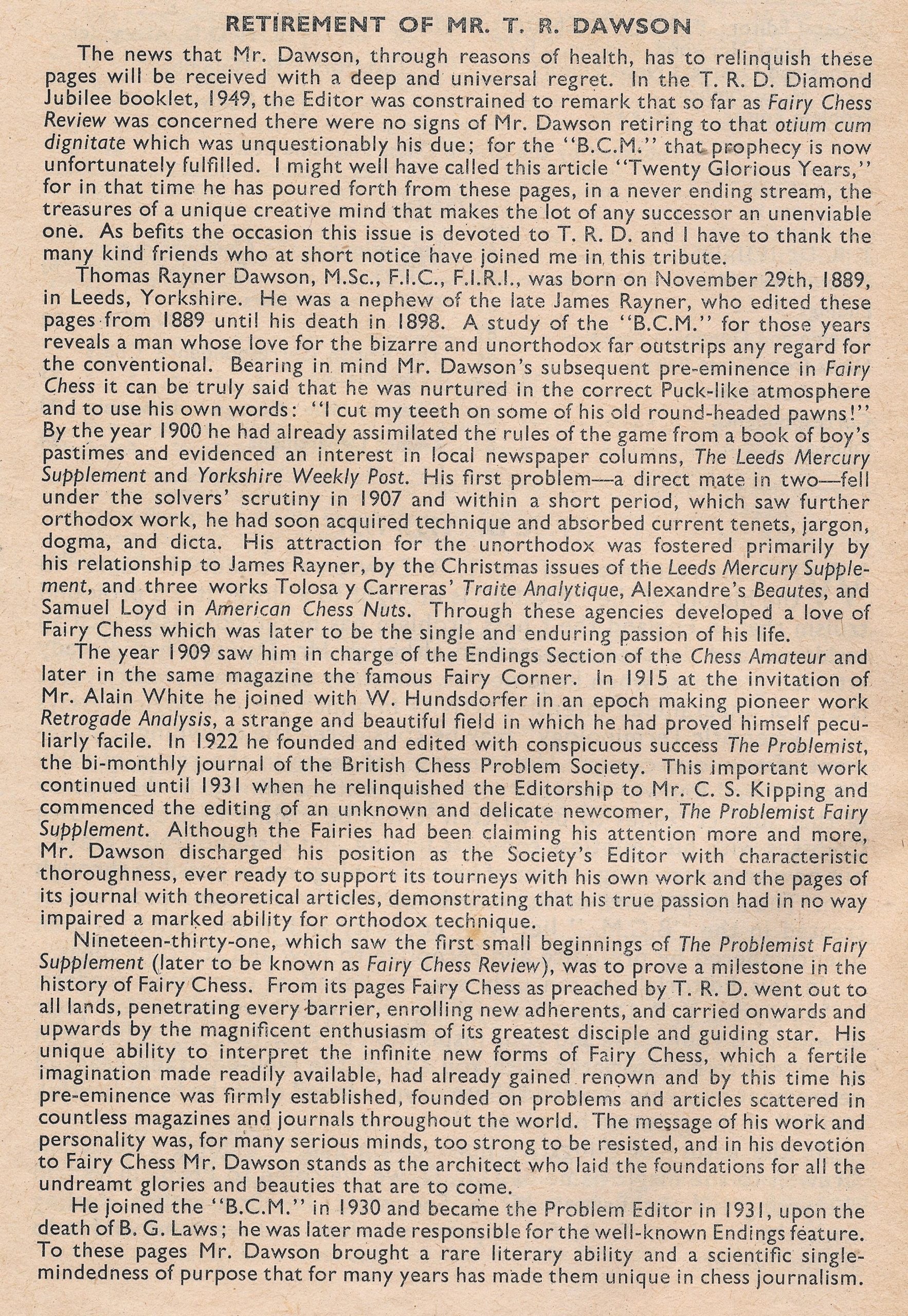
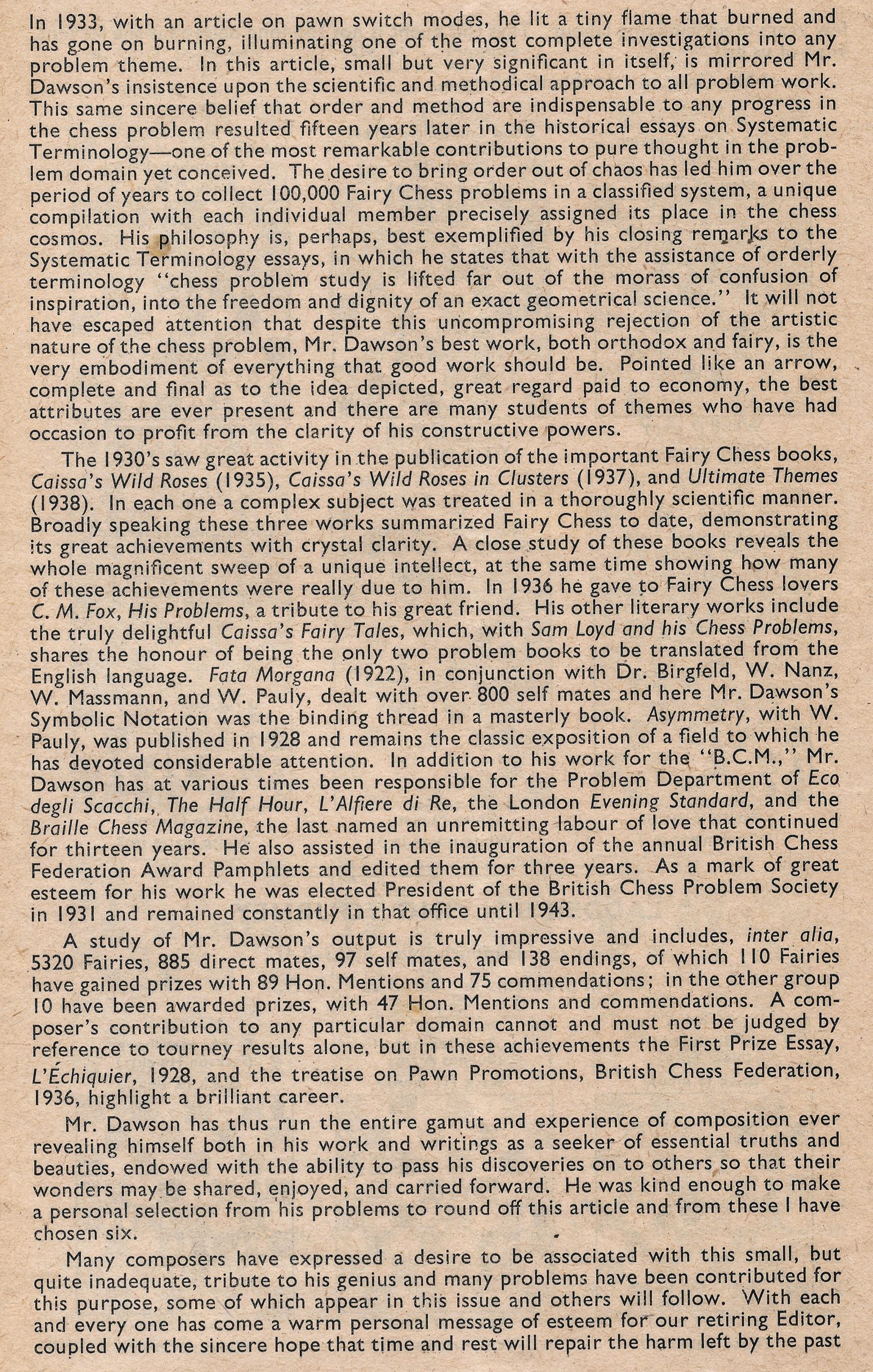
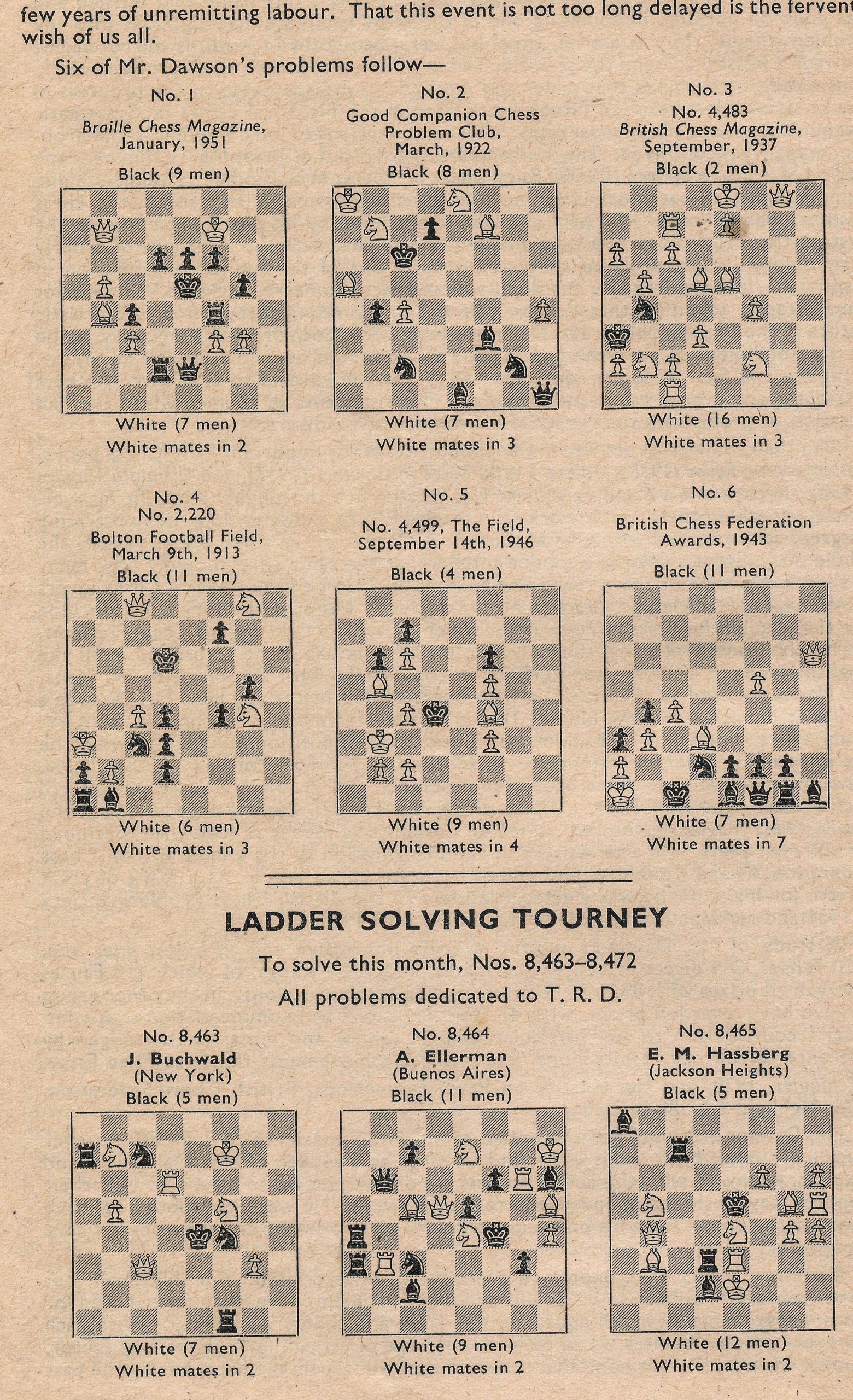
Unfortunately TRD was to pass away not much more than a year after the retirement notice and in British Chess Magazine, Volume LXXII (72, 1952), Number 4 (April) pp. 107 – 108 we have this obituary also from Stanley Sedgwick :
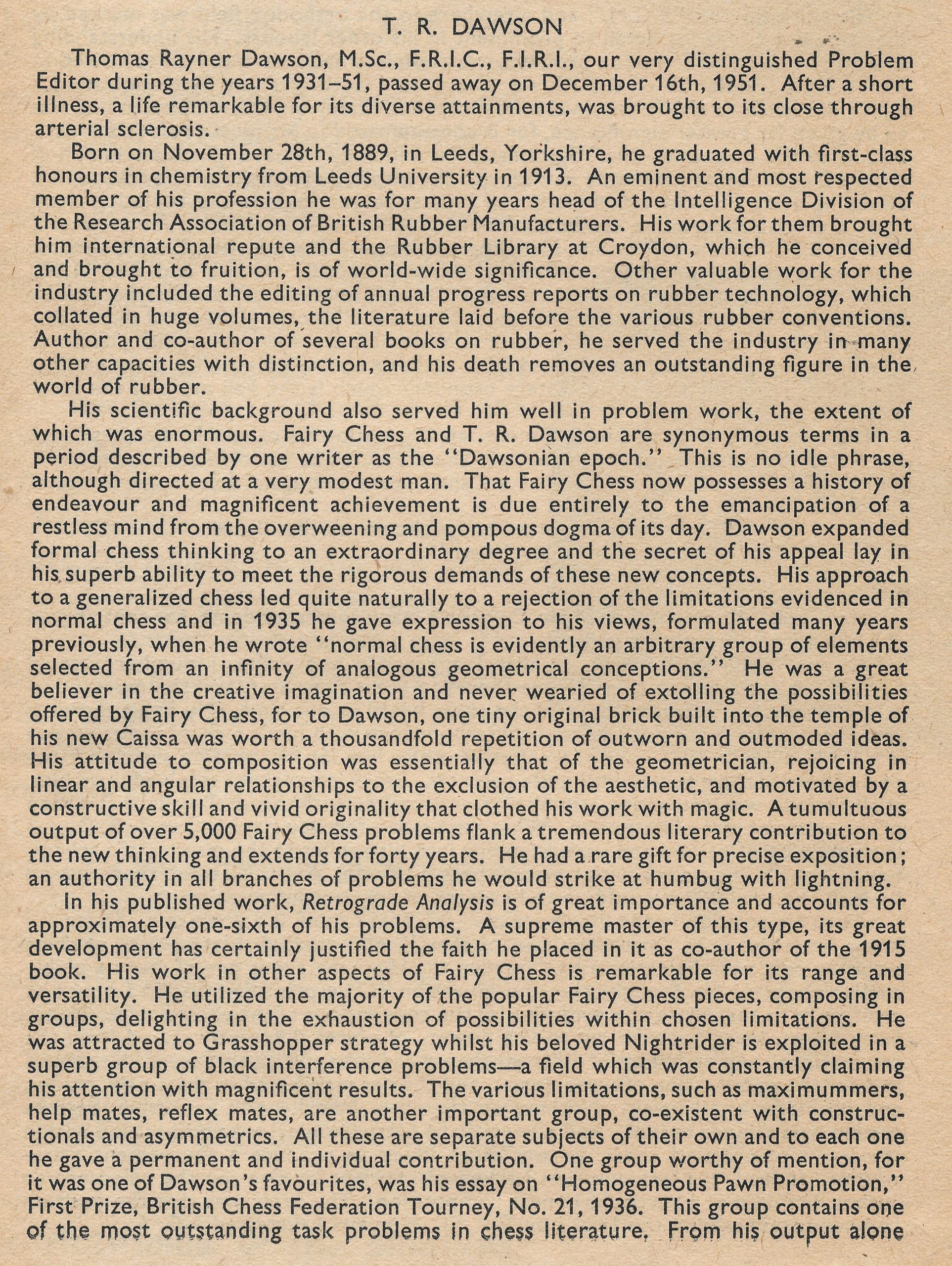
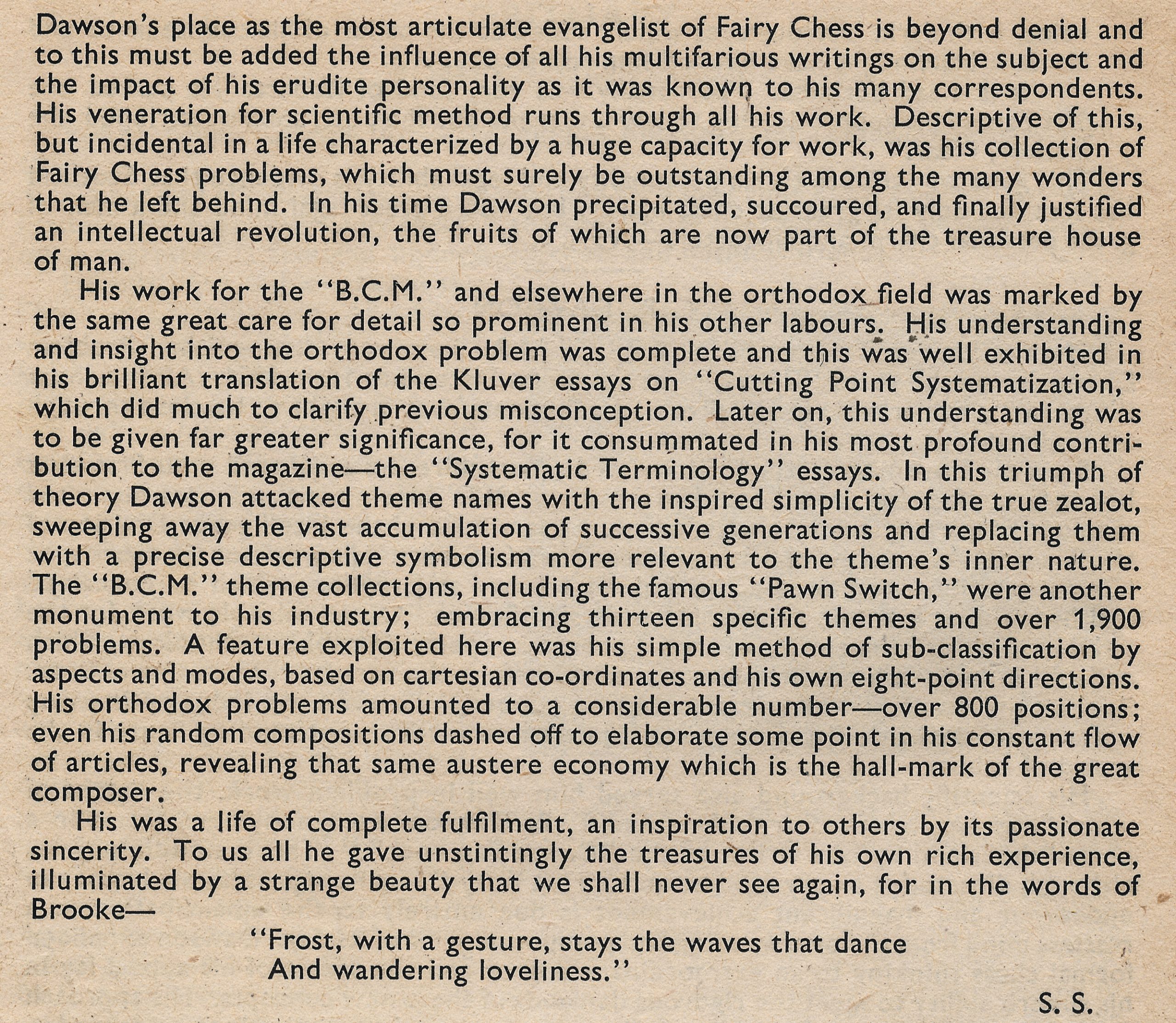
The same obituary contains the following appreciation by Gerald Abrahams :
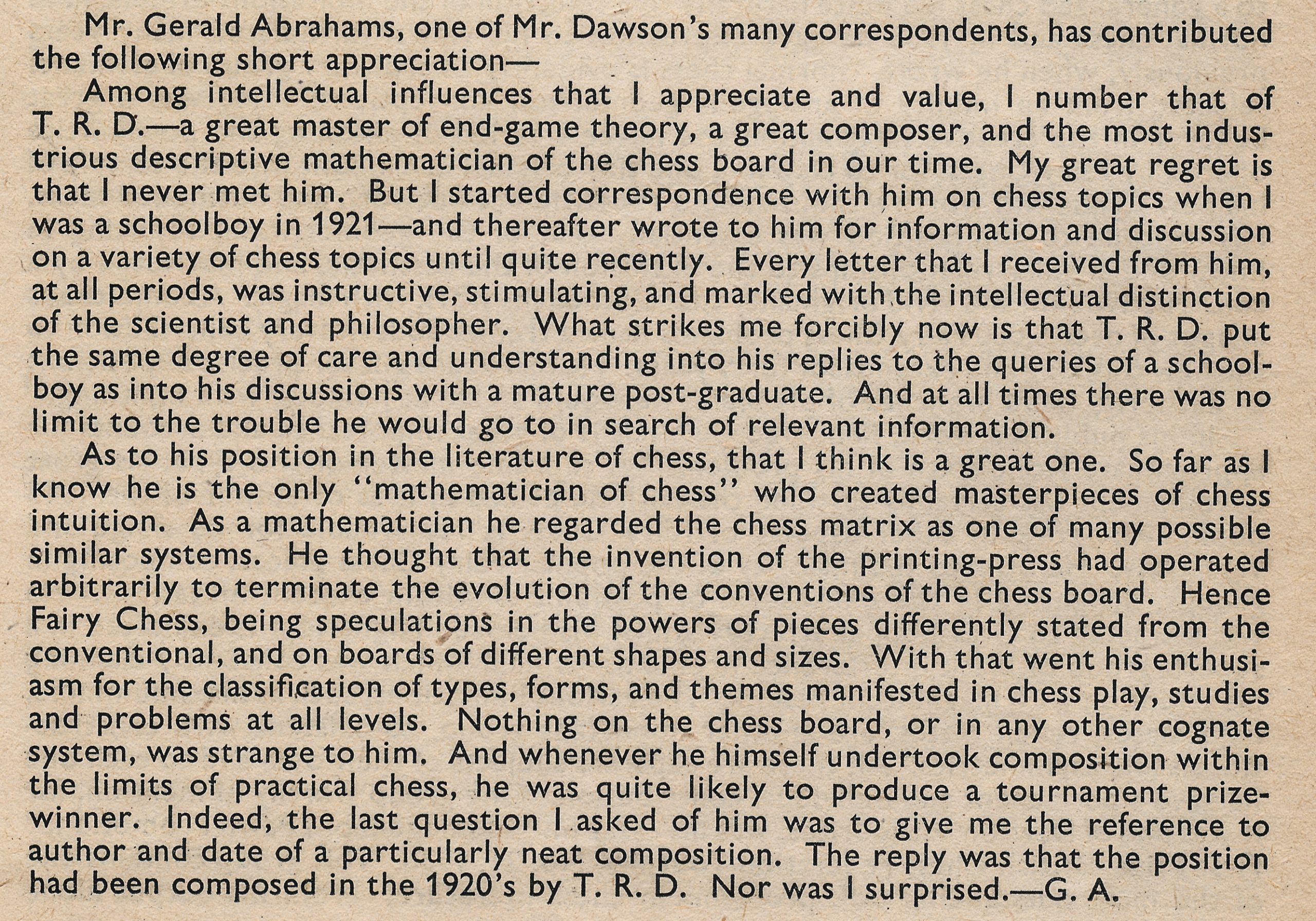
According to Edward Winter in Chess Explorations (Cadogan Chess, 1996) page 106, Chess Note 457, :
“George Jellis suspects that a chess man has been named after a street:
Just south of St. Paul’s Cathedral in London is a private gated road called Nightrider Street which, I believe belongs to the Post Office and presumably derives its name from the night mail coaches of earlier days. It is only a short walk from the St. Bride’s Institute, where the British Chess Problem Society has held its meetings since its foundation in 1918. Among the founder members was TR Dawson, who published his first Nightrider problem in 1925.
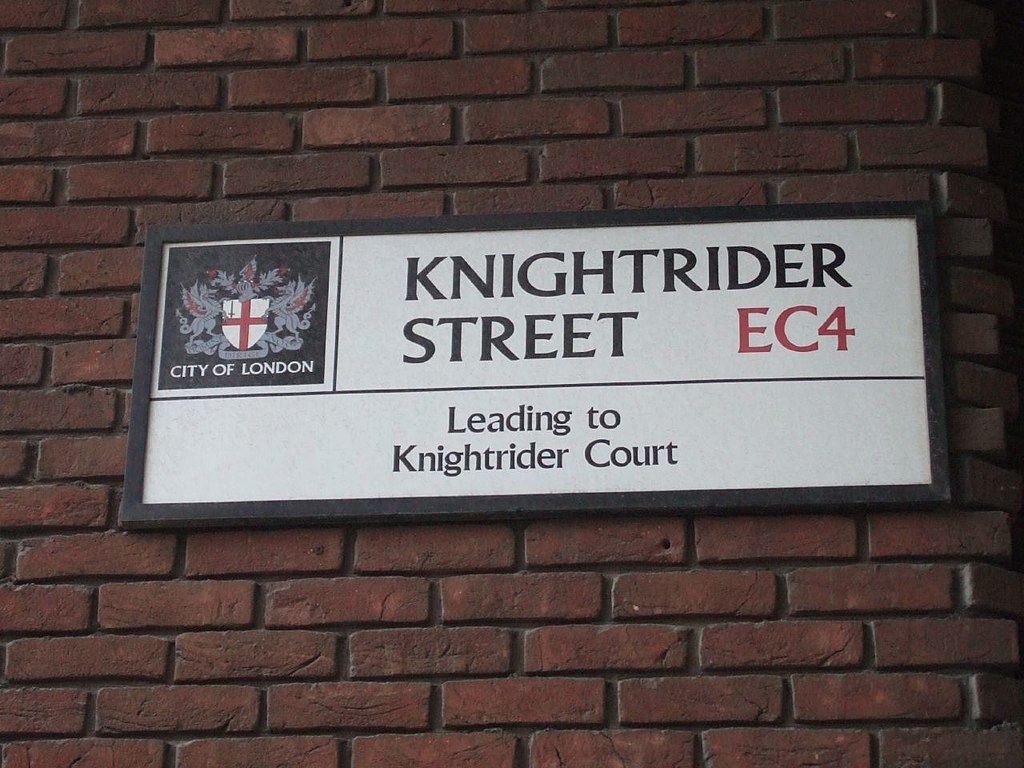
From Wikipedia :
“Thomas Rayner Dawson (28 November 1889 – 16 December 1951) was an English chess problemist and is acknowledged as “the father of Fairy Chess”.[1] He invented many fairy pieces and new conditions. He introduced the popular fairy pieces grasshopper, nightrider, and many other fairy chess ideas.
Dawson published his first problem, a two-mover, in 1907. His chess problem compositions include 5,320 fairies, 885 directmates, 97 selfmates, and 138 endings. 120 of his problems have been awarded prizes and 211 honourably mentioned or otherwise commended. He cooperated in chess composition with Charles Masson Fox.
Dawson was founder-editor (1922–1931) of The Problemist, the journal of the British Chess Problem Society. He subsequently produced The Fairy Chess Review (1930–1951), which began as The Problemist Fairy Chess Supplement. At the same time he edited the problem pages of The British Chess Magazine (1931–1951).
Publications
Caissa’s Playthings a series of articles in Cheltenham Examiner (1913)
Retrograde Analysis, with Wolfgang Hundsdorfer (1915)
Fata Morgana, with Birgfeld, Nanz, Massmann, Pauly (1922)
Asymmetry, with W. Pauly (1928)
Seventy Five Retros (1928)
Caissa’s Wild Roses (1935)
C. M. Fox, His Problems (1936)
Caissa’s Wild Roses in Clusters (1937)
Ultimate Themes (1938)
Caissa’s Fairy Tales (1947)
The last five titles were collected as Five Classics of Fairy Chess, Dover Publications (1973), ISBN 978-0-486-22910-2.”

